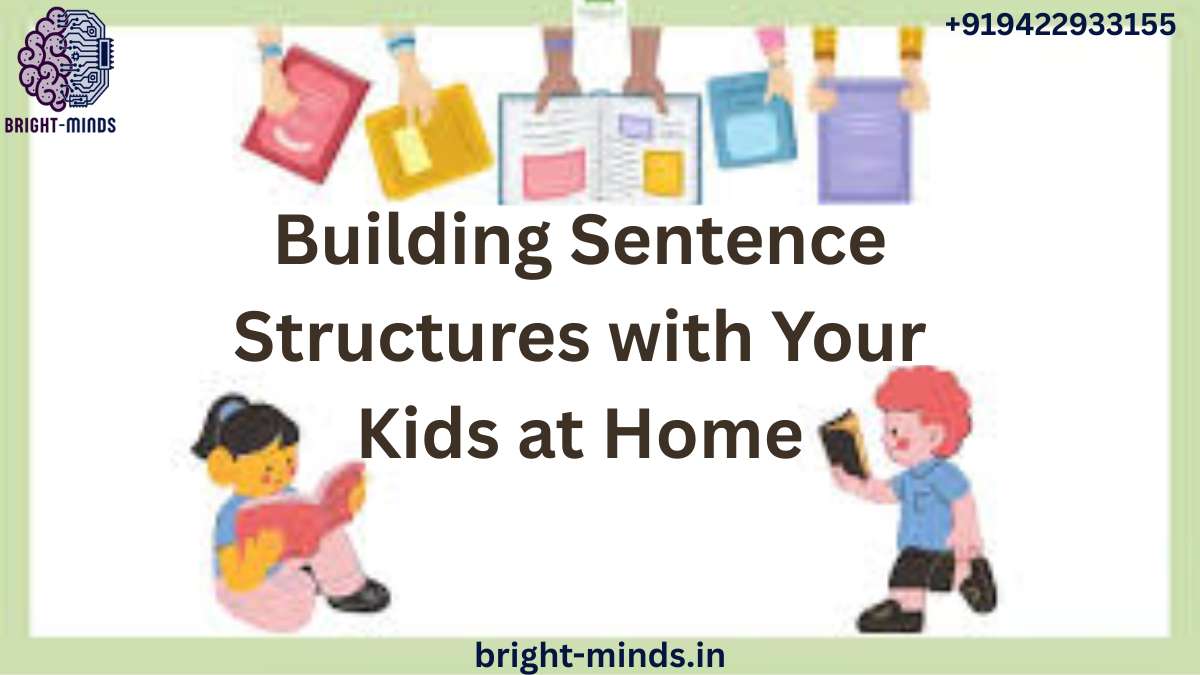In today’s fast-paced digital world, helping your child develop strong language skills at home is more important than ever. One of the most effective — yet often overlooked — ways to support this growth is by building sentence structures together in everyday moments.
Whether you’re a parent, a tutor, a teacher, or an education industry professional, understanding how kids learn to build sentences can unlock their full communication potential — and it’s easier than you think.
Let’s explore why sentence-building matters, how it supports long-term literacy and learning, and how you can make it part of your child’s daily routine.
Why Sentence Structure Matters
A sentence isn’t just a string of words. It’s a building block of thought, helping children express ideas, ask questions, and tell stories. When kids learn how to build strong, clear sentences, they also strengthen their:
- ✏️ Writing skills
- 🗣️ Speaking confidence
- 🧠 Critical thinking
- 📖 Reading comprehension
🧒 Example: A child who can turn “Dog run” into “The big dog is running in the yard” is not only expanding vocabulary but also learning grammar, sentence order, and expression — all at once.
The Foundation: Understanding Basic Sentence Parts
Before you dive into games and activities, it helps to understand the core components of a sentence:
- Subject: Who or what the sentence is about (e.g., The cat)
- Verb: What the subject is doing (e.g., jumps)
- Object (optional): Who or what is affected by the action (e.g., on the couch)
A complete sentence usually follows this pattern:
Subject + Verb + (Object/Detail)
➡️ The cat jumps on the couch.
Mastering these basics is key for kids to write and speak clearly — and that’s where your home environment becomes a powerful learning space.
Real-World Applications at Home
You don’t need textbooks or whiteboards to teach sentence structure. Your home is full of opportunities to practice — naturally, and in ways that feel fun.
✅ During Meal Prep
- Ask: “What are we doing?”
➡️ “We are cutting vegetables.” - Expand: “Who is cutting the carrots?”
➡️ “Mom is cutting the carrots.”
✅ At Playtime
- Use toys to tell stories:
➡️ “The dinosaur eats a leaf.”
➡️ “The baby dinosaur is sleeping under the tree.”
✅ In the Car
- Play sentence-building games:
➡️ “I see a ___.” (Child fills in with a noun.)
➡️ Add verbs and adjectives: “I see a red truck driving fast.”
These small, daily interactions are where sentence-building truly shines.
Industry Insight: Why Sentence Structure Is a Literacy Priority
In the world of early childhood education, sentence development is a key milestone. According to recent reports from EdWeek and Education Market Association, curriculum designers are prioritizing grammar and sentence-building skills starting in kindergarten. Why?
- 📚 Stronger writing skills lead to better academic performance across subjects.
- 💬 Students with better sentence fluency tend to perform higher in oral communication assessments.
- 💻 Ed-tech platforms are embedding sentence-building exercises into early literacy modules.
For company employees in the education and ed-tech sectors, this is an opportunity to enhance product design, improve curriculum offerings, and support measurable learning outcomes — starting with something as simple as structured sentences.
Market Trends: The Rise of Home-Based Language Learning
Since the pandemic, there’s been a massive surge in home-based learning resources. Parents are increasingly seeking tools and strategies that go beyond screen time — they want hands-on, language-rich experiences.
Trending Tools:
- 📱 Sentence builder apps (e.g., Endless Reader, Grammaropolis)
- 📘 Printable worksheets and sentence strips
- 🎲 Hands-on kits with flashcards and magnets
Smart brands and educators are now combining phonics, vocabulary, and grammar into multi-sensory sentence-building kits that promote both literacy and play.
Practical Tips: How to Build Sentences with Your Kids at Home
Ready to get started? Here are five easy and fun ways to practice sentence structure every day:
1. Use Sentence Strips
Cut strips of paper for nouns, verbs, and adjectives. Let your child mix and match to create silly or serious sentences!
2. Story Cubes
Roll dice with images or words and use them to build a sentence or mini-story.
3. Build-a-Sentence Challenge
Give your child three words (e.g., frog, jump, lake) and challenge them to form a sentence using all three.
4. Daily Sentence Journal
Encourage your child to write one complete sentence a day. Over time, they can add details, compound sentences, or even paragraphs.
5. Play “Fix It” Games
Give your child a broken sentence (e.g., “dog run fast”) and ask, “Can you fix this sentence?”
➡️ “The dog runs fast.”
These simple games reinforce structure, grammar, vocabulary, and creativity — all while having fun!
Why It Matters for Long-Term Success
Language is more than words — it’s how we think, connect, and express ourselves. By helping your child build better sentences, you’re not just improving literacy. You’re nurturing confidence, academic readiness, and even career potential down the line.
And for professionals in education or ed-tech, investing in sentence-structure learning is an investment in future-ready communication skills.
Take the First Step: Unlock Better Language Learning at Home
Ready to help your child build powerful sentences — and a powerful future?
you may be interested in this blog here:-

